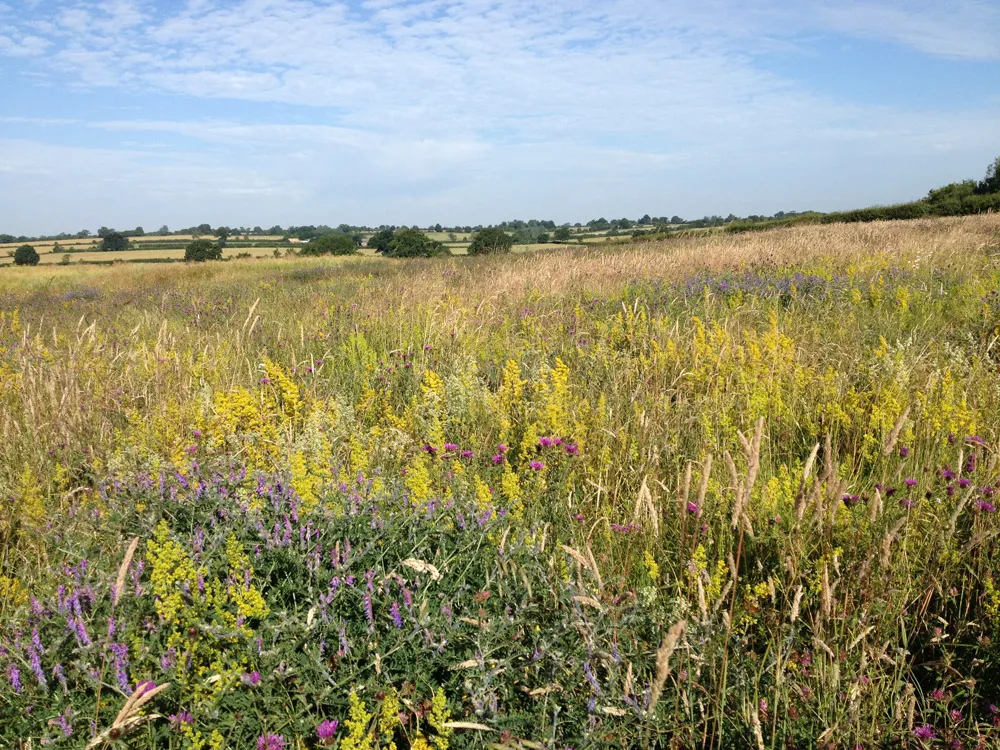Citation

Overview
Food production and wildlife conservation are often thought of as incompatible goals, and it is rare that conservation studies consider both economics and long-term changes in ecology. However, a decade-long study at a commercial arable farm in Buckinghamshire has found that agri-environment schemes significantly increased local bird and butterfly populations without damaging food production, offering hope for the UK’s farmland birds and butterflies.
In more detail
The authors are extremely grateful to the Hillesden Estate, especially Robin Faccenda, Richard Franklin and Jamie Orpwood. Thanks to Sarah and Lucy Hulmes, Jodey Peyton, Nadine Mitschunas, Bjorn Beckmann, Marta Maziarz and Mark Jitlal for undertaking field surveys and to Lucy Ridding and Ben McCrindle for assistance with digitising data. UK Wider Countryside Butterfly Survey data are copyright and database right Butterfly Conservation, the UK Centre for Ecology & Hydrology, British Trust for Ornithology, and the Joint Nature Conservation Committee (JNCC), 2020. The UK Breeding Birds Survey is jointly funded by the BTO, JNCC and the Royal Society for the Protection of Birds (RSPB). The authors are indebted to the thousands of volunteers who contribute data to the WCBS and BBS. Both phases of the Hillesden experiment were funded by the Department for Environment, Food & Rural Affairs (Defra). Thanks to all reviewers who gave constructive feedback on an earlier version of this manuscript.
Abstract
Declines in farmland biodiversity remain evident despite over three decades of research and implementation of agri-environment schemes (AES). Although positive effects of AES are often demonstrated locally or in the short term, studies exploring longer-term trends in biodiversity often show contradictory results. Evidence for the potential of AES to drive beneficial changes in populations remains sparse, especially for mobile taxa such as birds and butterflies.
We analysed the abundance of 12 widespread bird and 9 butterfly species from a 10-year study of AES intervention in a farmland landscape in southern England. We compared estimates of annual population growth rates from our study landscape with rates derived from large-scale national monitoring schemes in equivalent landscapes without substantial AES.
Species trends in our study landscape were frequently stable or increasing, in contrast to concurrent declining trends in equivalent landscapes without AES. These differences were significant for total abundance of granivorous species and for chaffinch Fringilla coelebs, blue tit Cyanistes caeruleus and great tit Parus major individually. For butterflies, differences in trends were significantly more positive for gatekeeper Pyronia tithonus and green-veined white Pieris napi, while small white P. rapae showed a trend that was significantly more negative in our study landscape.
Our results demonstrate that, for some bird and butterfly species, the higher abundances associated with areas of AES uptake within a typical commercial farmland landscape can co-occur with positive or stable population trends over long time scales and that these trends can show significant differences from those in equivalent landscapes without substantial AES interventions. Our results suggest that previously observed inconsistencies in AES benefits may in part reflect a lack of long-term studies with accurate data on AES uptake and quality (i.e. successful implementation and management). Our results, thus, affirm the importance of delivering and monitoring high-quality AES options if the design and implementation of the next generation of AES is to achieve significant benefits for biodiversity.
